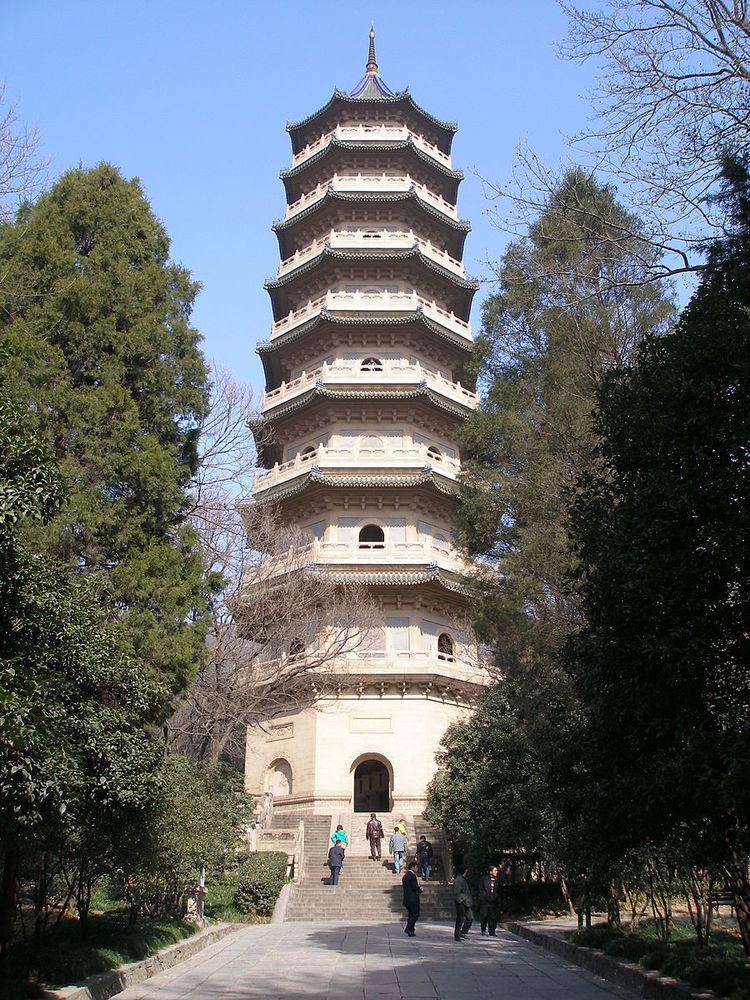Completed 515 | Country China | |
 | ||
Similar Ming Xiaoling Mausoleum, Sun Yat‑sen Mausoleum, Purple Mountain, Sun Yat‑sen Mausoleu, Presidential Palace | ||
China the linggu temple
Linggu Temple (Chinese: 灵谷寺; pinyin: línggǔ sì) is a Buddhist temple in Nanjing, Jiangsu, China. The temple was described as "the best Buddhist temple in the world". It is now surrounded by a large park.
Contents
Linggu temple nanjing
History
The temple was first built in 515 during the Liang dynasty (502-557). It used to lie at the northeast foot of the Purple Mountain, i.e. where the Ming Xiaoling Mausoleum is located, since the Hongwu Emperor of the Ming dynasty (1368–1644) chose the place to be his mausoleum and then the temple was moved to the present place. The temple was named by the Hongwu Emperor himself. It used to be large and covered an area of over 300,000 square metres. Later it was destroyed in warfare during the reign of the Xianfeng Emperor in the Qing dynasty (1644–1911) and rebuilt during the reign of the Tongzhi Emperor. In the temple, except for buddhas and bodhisattvas, Xuanzang and his relics were enshrined and worshipped.
Wuliang Hall
Wuliang Hall, or Beamless Hall, was constructed in 1381, and is 22 metres high and 53.8 metres wide. The hall enjoys high reputation for its special architectural techniques. It has three archways on the front and rear sides respectively. The structure was built with bricks from the bottom to the top entirely, without a piece of wood or a single nail. Thus it was called Wuliang Hall, since Wuliang means beamless. It happens that the hall originally enshrined Amitābha (the Buddha of Infinite Light) whose Chinese name is similar to "Wuliang". Later in 1928, the hall was turned into a memorial hall for soldiers who lost their lives in the Northern Expedition (1926–1928). More than 30,000 soldiers were enshrined.
Linggu Pagoda
Linggu Pagoda was built in 1929 as a sign of remembrance for the soldiers. The nine-stories tall pagoda stands 60.5 metres high. Speeches made by Sun Yat-sen and epigraphs of Chiang Kai-shek were inscribed on the tower.
In the temple, there is also a Three Superb Tablet, on which a painting of Baozhi painted by Wu Daozi, a famous painter; a memorial poem written by Li Bai, a Tang dynasty poet; calligraphy written by Yan Zhenqing, a well-known Tang dynasty calligrapher, is inscribed. Since the three were all masters in their own field in the Tang dynasty, the tablet was considered Three Superb Tablet. Unfortunately, the original tablet was broken in warfare, the present one is a duplicate made during the reign of the Qianlong Emperor in the Qing dynasty.
